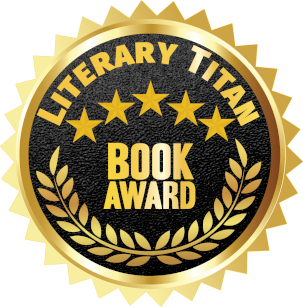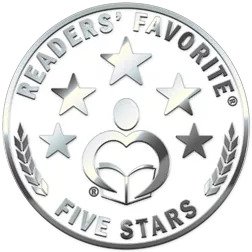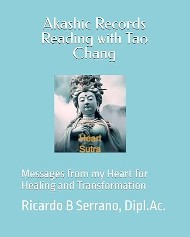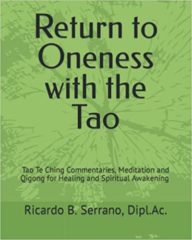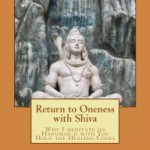Classical Chinese Medicine vs TCM





Shen is Light in the Eyes







Ricardo’s quotes


TEJATHA OM GATE GATE PARAGATE PARASAMGATE BODHI SVAHA




















13 Tai Chi postures/ principles

Book for Tai Chi Zoom instruction appointment



This form is especially good in cultivating internal power channeling Qi for emision of power (Fa Jin)! – Sifu Ricardo B Serrano




Soul Healing interview with Master Sha
Soul Healing is not similar to Qigong healing. Qigong is energy healing. We go beyond energy. It’s Divine Healing Hands or Divine Soul Healing. We can do one-to-one healing, group healing, and distance healing. There are all kinds of sickness in the physical, emotional, mental, and spiritual bodies. To heal and transform humanity, we must remove Jing qi shen blockages. Jing qi shen blockages are the biggest pollution. – page 7, Return to Oneness with the Tao


Da Bei Zhou Compassion Mantra (fast version) (Password protected for clients only).

Tao Healing Hands Blessing (Password protected for clients only).
 |
 |



MIP 470-633-655-810 for viral infection




Meditation: A Simple, Fast Way to Cure Your Negative Emotions

You are the greatest miracle in the world

Tao Water Blessing for Healing


Tao Te Ching, Chapter 8 from Return to Oneness with the Tao


The Pan Gu Shen Gong is the key to balancing Yin and Yang energies in the body, and an easier and simpler complementary Qigong practice to learn with other advanced meditative practices.

– Master Ricardo B Serrano

Is the Qi experience related to the flow experience?

Tao Water Blessing for Healing


by Heiner Fruehauf, PhD, LAc
Perspectives On “TCM” and Classical Chinese Medicine – A Comparative Outlook
It has been the main purpose of this article to characterize the framework of “TCM,” a system which presently is the standard model of Chinese medicine in mainland China, and which increasingly influences the practice of Oriental medicine in the West. By creating a record that makes “TCM” transparent as a historically and politically conditioned system that is fundamentally different from the multifaceted traditions that constitute traditional Chinese medicine, I was attempting to draw a base line that helps individual practitioners, schools, and agencies to determine what their own position in this matter is. In this process, it is not my point to denounce the phenomenon of “TCM.” The trademark standardization procedures of “TCM” are perhaps the main reason that Chinese medicine is still alive and thriving today, after a prolonged period in which China and the rest of the modernizing world was willing to forsake everything in exchange for the power of Western medicine. Its barefoot doctor approach, moreover, did save many lives when expert healthcare was not available in the Chinese countryside. It is my point, however, to expose the common practice of advertising the education and clinical practice of “TCM” under traditional insignia that suggest the transmission and application of an ancient Eastern healthcare system that is based entirely on holistic principles.
The general discourse on Oriental medicine in the West appears to have reached the realm of the 10,000 details (i.e., “what points work best for diabetes,” “how to treat headaches with Chinese herbs“), while leaving the basic parameters of its scientific approach unexplored. To help stimulate a broader discussion on Chinese medicine methodology, I have created a table that contrasts the characteristics of “TCM” with those of traditional Chinese medicine — here labeled “classical Chinese medicine” in order to distinguish it more clearly from its modern cousin — as I and my senior Chinese teachers describe it. This table is simply meant to be a starting point, a tool that may help Oriental medicine practitioners and institutions assess their mode of teaching and practice. It may be incomplete and, due to the nature of the black-and-white table format, overstate some of the differences that set the two systems apart.
Classical Chinese Medicine
Based on naturalist philosophy (Daoism)
- Alchemical (synthetic) approach: scientific endeavor defined as acknowledgement and exploration of the complexity and multi-dimensionality of nature and the body
- Based on traditional parameters of Daoist science (yin/yang, wuxing, bagua, wuyun liuqi, jing-qi-shen, etc.)
- Views medicine as a branch of the Daoist mother sciences (HuangLao, zhouyi, fengshui, etc.)
- Source oriented: reliance on tradition (experience)
- Requires broad base of knowledge due to intimate relationship to other traditional arts and sciences
- Body is treated as a microcosm that follows macrocosmic laws and is continually in-formed by macrocosmic influences (totality of cosmic/calendric/ seasonal patterns created by conjunctions of sun, moon, and stars)
- Based on experience of human “subject” in environment of geocentric universe
- Based on dualistic cosmology of becoming (process oriented world view observing the continuous change of physical phenomena, symbolized by the changing pattern of the moon)
- Impartial view of reality as continuous interplay between heaven and earth, light and shadow, “demons” (gui: lunar influences) and “spirits” (shen: solar influences), birth and death, male and female, yin and yang
- “Sexual” world view (life is product of ceaseless intercourse between heaven and earth; human beings are principally sexual beings) Communicates through symbols which contain and correlate multiple layers of meaning
- Preserves the lunar element of complexity and “obscuring” mystery that defies exacting definition (wuwei maxim: “do not define categorically“)
- Views body as field (traditional zang/xiang theory: zang/fu are primarily viewed as functional systems)
- Body-mind-spirit medicine
- Physician is intermediary to the sacred, cultivating the dual roles of the shaman (master of intuited knowledge) and the sage (master of scholarly knowledge), connecting above and below, inside and outside, energy and matter
- Physician aspires to the Dao of medicine, a process which requires the actualization of his/her individual path by working to become a self-realized being (zhenren)
- Major tools: qigong meditation, music, calligraphy, painting, poetry, ritual journeys
- Highly individualized discipleship based training
- Teachers are individual “master” figures who emphasize the creation of a lineage inspired atmosphere/culture
- Transmission of “understanding” (may include Qi transmission from master to disciple)
- Multi-directional memorization: Memorization of classical texts that are interpreted situationally according to individual circumstances
- Health defined as the active process of refining body essences and cultivating vital forces: concept of “nourishing life” (maximizing physiological functions)
- Clinical diagnosis primarily based on “subjective” experience of the senses
- Clinical outcome primarily based on patient’s subjective feeling of well-being and physician’s collation of sensory information (tongue, pulse, etc.)
- Highly individualized diagnosis: emphasizes bianzheng (diagnosis by symptom pattern)
- Highly individualized treatment: favors flexible therapeutic approach which freely chooses from a wide variety of modalities, and within them, favors a flexible usage of prescription items
- Use of wide range of clinical modalities, including the external application of herbs to acupuncture points, umbilical therapy, qigong exercises, waiqi emission, five-phase emotional therapy, alchemical dietetics, ziwu liuzhu acupuncture, etc.
- All inclusive scope of practice (includes emergency medicine, bone fractures, serious diseases such as cancer, etc.)
- All encompassing training (may lead to clinical specialization in a traditional field, such as external medicine, if inspired by the clinical expertise of a specific teacher)
- Combination of Western and traditional modalities, if employed, is performed according to Chinese medicine criteria (i.e., Zhang Xichun’s method of energetically classifying aspirin and integrating it as an alchemical ingredient into traditional formulas)
Traditional Chinese Medicine
Based on pragmatist philosophy (Confucianism, scientific materialism, communism)
- Analytical approach: scientific endeavor defined as elimination of complicating factors and unpredictable occurrences
- Primarily based on parameters of modern science (virus, inflammation, blood pressure, etc.)
- Views medicine as a branch of modern science
- Branch oriented: reliance on progress (experiments)
- Technical and highly specialized trade
- Body is treated as an independent entity
- Based on “objective” heliocentric world view
- Based on cosmology of being (concept of singular, meta-physical truth, symbolized by fixed position of the sun)
- Confucian/materialist method of dividing heavenly and earthly spheres and “rectifying the names” (zheng ming: convert the binary symbols of lunar mythology into the immutable and one-sided terminology of the solar perspective, and dignify an absolute position as “right/good/ correct“)
- Monistic world view (human sphere is separate from heaven; human beings are principally individuals); astrology, sexuality, and ecstasy taboo
- Communicates through words and terms which refer to narrowly defined contents
- Demystifies and demythologizes the traditional record by “illuminating” aspects of lunar ambivalence, and by creating “clear and simple” textbook definitions (youwei maxim: “define as firmly and precisely as possible“)
- Views body as materiality (influence of modern anatomy: zang/fu are primarily viewed as structural organs)
- Body-(mind) medicine
- Physician is skilled technician who rectifies imbalances between bodily humors and calibrates the structural composition of the body (eliminate viruses, etc.)
- Physician is part of a legally defined profession with standardized ethical standards
- Major tools: mandatory courses/tests on legal responsibility and liability issues
- Highly standardized institutionalized training
- Teachers are assigned to standardized curriculum items, and thus in principle exchangeable
- Transmission of cerebral knowledge through “words” and “terms“
- Mono-directional memorization: Use of standardized textbooks that prepare for testing of knowledge in multiple choice format; classics are placed in museum
- Health defined as the absence of pathology
- Clinical diagnosis primarily informed by “objective” instrumental data (as provided by prior Western medicine diagnosis)
- Clinical outcome primarily monitored through instrumental data (reduction of viral load in blood, disappearance of lump on x-ray, etc.)
- Standardized diagnosis: emphasizes bianbing (diagnosis by disease name)
- Standardized treatment: favors fixed modalities (herbs or acupuncture), and within them, promotes fixed herb regimens (patent medicines) and fixed point recipes
- Selective ratification of certain modalities that have a measurable effect on the physical body and that can be explained from the perspective of modern science, such as the internal administration of herbs and ashixie acupuncture
- Selective scope of practice (chosen areas in which modern studies have shown an advantage of TCM over Western medicine, such as chronic pain or allergies)
- Progressive clinical specialization according to the model of Western medicine (acupuncture, internal medicine, external medicine, gynecology, pediatrics, tumors, cardiovascular diseases, digestive diseases, etc.)
- Combination of Western and traditional modalities is recommended in most cases; combination follows Western medicine criteria (i.e., abdominal surgery plus post-operative administration of herbs with anti-adhesive effect such as magnolia bark)
With regard to the positions outlined in this table, most of us will find that our own convictions and modes of practice follow propositions that can be found on both sides of the dividing line. In particular, it is my experience that Oriental medicine practitioners in the West often proclaim to embrace the principles stated on the left, while their modus operandi in terms of diagnosis and treatment is much more closely aligned with the attitudes outlined on the right — much like Chinese officials used to aspire to the image of the Daoist philosopher-poet in their private life, while adhering to pragmatist Confucian values when acting in public. Others, after surveying this table, might find that although they were not aware of a “TCM issue” in the past, they certainly like the premises of “TCM” better than the mystifying conjectures of the classical path.
It is, therefore, not my goal to dignify the classical way(s) of Oriental medicine and malign “TCM,” although it has become clear in the course of this essay where my own biases are. Neither do I suggest that any deviation from pre-20th century ways of diagnosis and treatment automatically establishes the practice of “TCM.” The use of modern equipment to measure electric resistance on acupuncture points, for instance, perfectly adheres to traditional zang-xiang theory (“examine the surface to determine the hidden factors inside“). The traditionalist school of Japanese Kanpo medicine, on the other hand, with its unrelenting insistence on the prescription of unmodified Shanghan Lun formulas and its formulaic way of interpreting the zheng (symptom picture) concept, shares many aspects of standardized “TCM” as I have outlined it in this paper.
Due to the flexible and change oriented nature of the truly traditional approach, therefore, the term “classical” does not mean to turn the clock back to the times of Zhang Zhongjing or Sun Simiao, but rather to utilize the unchangeable principles of the art and science of Chinese medicine to assess, appreciate, and potentially incorporate new information from all branches of knowledge.
Most of all, this article is yet another call for respecting the art of Oriental medicine as a science in its own right.15 In my opinion, it is one of the most tragic problems of 20th century Oriental medicine that it feels compelled to scour for legitimacy by conducting “scientific” tests that conform to the parameters of Western medicine. To illustrate the absurdity that can spring from this situation, I would like to relate an incident that I witnessed at the teaching hospital of the Chengdu College of Traditional Chinese Medicine in 1990. A famous doctor at the hospital was widely known for prescribing an herbal remedy that appeared to be highly effective in bringing about the speedy and painless delivery of babies by first- time mothers. Expecting mothers sometimes came to the hospital from as far as fifty miles away to obtain a prescription. After two decades of consistently positive feedback, a local pharmaceutical company decided to produce his formula as a patent. Before “modernization” had become an issue, the positive testimonies of hundreds of patients would have sufficed to get the project started, but now new codes demanded that direct action of the herbal solution on the uterus must first be verified in a laboratory setting. The lab director went through great pains to exclude factors that could potentially effect the outcome of the experiment. He put a female rabbit in a sterile incubator, stabilized the temperature and light exposure, surgically isolated the uterus and placed it outside of the rabbit’s abdomen, and finally injected the herbal solution directly into the carefully extrapolated organ. To the researcher’s surprise, nothing happened, even when he repeated the experiment with a number of other animals. In a second series of experiments, he injected a variety of other substances into rabbit uteri and, after observing that some of them induced contractions, proclaimed that they were more suitable for mass production. However, when the newly “discovered” herbs, which in traditional pharmacopoeias are not at all related to uterine effects, were tested on eager mothers by the old obstetrician, they failed to produce any clinical results. Thoroughly confused, the managers of the company decided to withdraw from the project.
To me, this incident exemplified how the elaborate procedures of reductionist science can project a highly distorted picture of the reality of the human body, producing results that are essentially non-scientific. The traditional doctor and most of his colleagues seemed undisturbed by the outcome of the experiment, since they adhered to a set of entirely different scientific principles which demand verification through non-sedated, intact people who deliver babies in an uncontrolled real-life environment. According to their reasoning, a) rabbits are different from humans, b) human beings usually do not give birth in completely controlled conditions with their own uterus hanging from their bellies, and c) the remedy in question is designed to work via the digestive process of metabolic transformation rather than through direct injection into an isolated part of the organism.
Does not the prolific depth of Chinese medicine present a scientific approach that bears the power and the promise to work the other way round? Do we always have to wait for a related discovery in Western medicine before we sanctify Qigong or other aspects of Chinese medicine that were previously deemed “unscientific“? Could we not utilize so far inexplicable Neijing concepts such as wuyun liuqi (cosmic cycles) and ziwu liuzhu (chrono-acupuncture) to actively inspire the nature and direction of modern scientific experiments? As the profession of Oriental medicine is stepping into maturity, it needs the inner respect for its own wisdom, which no gloss of doctoral level ratification and other marks of progress can deliver from the outside.
If we must look to China as a model, we should pay attention to the fact that the main problem raised in this article — the demise of traditional Chinese medicine under the “TCM” system — has not gone unnoticed in the People’s Republic itself. In addition to the classicist renaissance movement introduced in section four of this article, it should be noted that the concept of the lab oriented TCM doctorate has been matched by a degree program that systematically facilitates the succession of traditional knowledge from “famous doctor” (ming lao zhongyi) to “master disciple” (jicheng ren). In 1999, moreover, Chengdu University of TCM launched an educational pilot project for a segment of its incoming class that is modeled after the 1963 curriculum-teaching the fundamental concepts of Chinese medicine through the classics, reading the major medical classics in their entirety, and studying Western medicine only in a rudimentary fashion. “If we don’t do this,” the program director Deng Zhongjia said at the time, “very soon there won’t be much left of traditional Chinese medicine.”16
For the complete original version of Heiner Fruehauf’s above article, please read Chinese Medicine in Crisis: Science, Politics and the Making of “TCM”
Notes:
1) This article, in shorter form, was first published in the October 1999 issue of the Journal of Chinese Medicine. I owe the inspiration for this essay, as well as much of the detail information contained in it, to my mentor Prof. Deng Zhongjia, Dean of the College of Medical Theory at Chengdu University of TCM.
2) Wa Zhiya, ed., Zhongguo Yixue Shi (A History of Chinese Medicine), Nanchang: Jiangxi Kexue Jishu, 1987, p. 278.
3) Wa Zhiya, ed., Zhongguo Yixue Shi (A History of Chinese Medicine), Beijing: Renmin Weisheng, 1991, p. 488.
4) Ibid., p. 489.
5) Wa Zhiya, 1987, p. 288.
6) Mao Zhuxi Yulu (Sayings by Chairman Mao), no editor, no publisher, p. 54.
7) See a series of articles published in 1958 in China’s official newspaper, Renmin Ribao (The Peoples’ Daily); i.e., “Dali kaizhan xiyi xuexi zhongyi yundong” (Let Us Give Strong Momentum to the Western Doctors Studying Chinese Medicine Movement). See Yu Zhenchu, Zhongguo Yixue Jianshi (A Brief History of Chinese Medical Science), Fuzhou: Fujian Kexue Jishu, 1983, p. 446.
8) Mao Zedong, “Dui weishengbu gongzuo de zhishi” (Instructions Regarding the Work of the Ministry of Public Health), in Ziliao Xuanbian (A Collection of Materials), no editor, no publisher, 1967, p. 312.
9) See the authoritative work in two volumes published by the Chinese Ministry of Health in 1994-95, Zhongyao Xinyao Linchuang Yanjiu Zhidao Yuanze (Guidelines for Clinical Research Pertaining to New TCM Remedies).
10) Cui Yueli, ed., Zhongyi Chensi Lu (Pondering Core Issues of Chinese Medicine), 2 vols., Beijing: Zhongyi Guji, 1997, vol.1, p.25.
11) Li Zhichong, Zhongyi fuxing lun (Advocating the Renaissance of Chinese Medicine), Beijing: Zhongguo Yiyao Keji, 2002, p.344.
12) Liu Lihong, Sikao Zhongyi (Contemplating Chinese Medicine), Guilin: Guangxi Shifan Daxue, 2003, p.40.
13) Ibid., p.34.
14) See Li Ke Lao Zhongyi Jiwei Zhongzheng Yinan Bing Jingyan Zhuanji (A Collection of Case Histories of Chinese Medicine Elder Dr. Li Ke’s Treatments of Acute Emergency Disorders and Recalcitrant Diseases), Taiyuan: Shanxi Kexue Jishu, 2002.
15) The issue of respect for the Chinese scientific tradition as a stand-alone body of science — and its demise at the hands of P.R.C. administrators — was first introduced by the prolific work of Joseph Needham, and more recently, specified for the field of Chinese medicine by Manfred Porkert, Leon Hammer, and Bob Flaws. See Leon I. Hammer, “Duelling Needles: Reflections on the Politics of Medical Models,” American Journal of Acupuncture (AJA), 19/3 (1991); Bob Flaws, “Thoughts on Acupuncture, Internal Medicine, and TCM in the West,” Journal of Chinese Medicine, 38 (1992); Manfred Porkert, Chinese Medicine Debased, Phainon, 1997.
16) In an interview with the author at his Chengdu home on September 4, 1999.

You have to ground first by Six healing Qigong sounds

You become what you chant!










– Institute for Functional Medicine
Functional medicine includes Classical Chinese Medicine – acupuncture, acupressure, herbs and Qigong because it addresses the underlying causes of disease. See Qigong Healing Method and Meridians: Qigong and Acupuncture Channels































 |
 |


 |
 |

and Six healing Qigong sounds with Mantras book.


Soul power is developed and used by Tao Healing Hands Practitioner



Tao Healing Hands



Hold Jin Dan below the navel






Perhaps the Most Effective Weapon Against Viral Infections




























To order the Atma (Soul) Yoga Meditation and Qigong Forms DVD with shipping, cost US $50, click Paypal.Me

Atma (Soul) Yoga Meditation and Qigong Forms DVD
“This is how I quiet my monkey mind – I become aware of my breath and my monkey mind quiets down. Where awareness goes, energy flows. Where energy flows, awareness follows.”
– Acharya Ricardo B Serrano


























Books for Returning to Oneness
His seven books covered thoroughly in You Hold the Keys to Healing together with Workshops will show you how to develop your energy bubble to experience oneness thereby healing holistically and returning to oneness.
Master Pranic Healer Ricardo B Serrano, R.Ac. integrates pranic healing with Enlightenment Qigong forms, acupuncture, herbs and acupressure. He is a certified Qigong teacher trained by Pan Gu Shen Gong Master Ou Wen Wei, Sheng Zhen Gong Master Li Junfeng, Qi Dao Master Lama Tantrapa, Primordial Wuji Qigong Master Michael Winn, Zhan Zhuang Qigong Master Richard Mooney, Pranic Healing Grand Master Choa Kok Sui, Master Nona Castro and Mang Mike Nator. He is also a certified Merkabah teacher trained by Merkabah Master Alton Kamadon. He is a kundalini teacher trained by Sri Vidya adept kundalini teacher Raja Choudhury.
His seven books Return to Oneness with Shiva, Return to Oneness with the Tao, Return to Oneness with Spirit, Meditation and Qigong Mastery, Keys to Healing and Self-Mastery, Oneness with Shiva, and The Cure & Cause of Cancer comprise altogether his Master Pranic Healer thesis for the Integral Studies of Inner Sciences.

Meditation and Qigong Books and DVDs to complement Classical Chinese Medicine practice:


Akashic Records Reading with Tao Chang book at https://www.amazon.com/dp/0988050285
Six healing Qigong sounds book at https://www.amazon.com/dp/0988050269
The Meditation and Qigong Mastery book at https://www.amazon.com/dp/0987781901
Return to Oneness with the Tao book at https://www.amazon.com/dp/0987781960
Return to Oneness with Spirit through Pan Gu Shen Gong book at https://www.amazon.com/dp/0987781979
Keys to Healing and Self-Mastery according to the Hathors book at
https://www.amazon.com/dp/0987781987
Return to Oneness with Shiva book at
https://www.amazon.com/dp/0988050218
Oneness with Shiva book at
https://www.amazon.com/dp/0988050226
The Cure & Cause of Cancer book at
https://www.amazon.com/dp/0988050234
To order the Maitreya (Shiva) Shen Gong & Omkabah Heart Lightbody Activation DVDs with shipping, cost $60, please click the Paypal button below:
 |
 |
 |
 |

Podcast: Play in new window | Download








